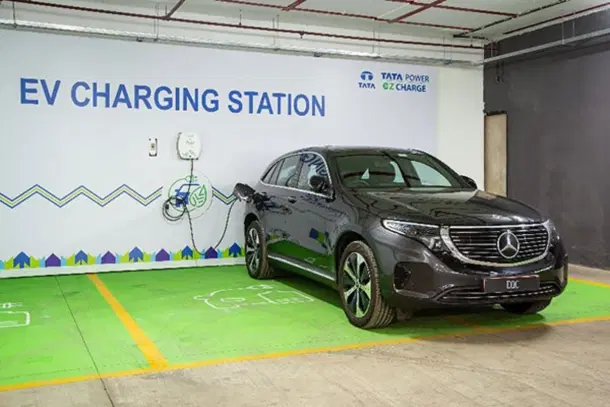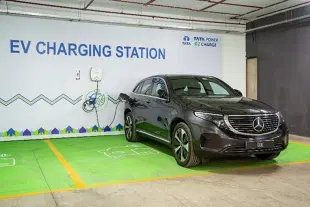News Brief
Explained: Modi Government's Rs 10,900 Crore PM E-DRIVE Scheme To Accelerate EV Adoption
Kuldeep Negi
Sep 12, 2024, 08:07 AM | Updated 08:09 AM IST
Save & read from anywhere!
Bookmark stories for easy access on any device or the Swarajya app.


The Prime Minister Narendra Modi-led Union Cabinet on Wednesday (11 September) approved the ‘PM Electric Drive Revolution in Innovative Vehicle Enhancement (PM E-DRIVE) Scheme' for promotion of electric mobility in the country.
The scheme, proposed by the Ministry of Heavy Industries (MHI), has an outlay of Rs 10,900 crore over a period of two years.
Key Highlights of the Scheme:
1. Subsidies and Demand Incentives
The scheme allocates Rs 3,679 crore to incentivise the purchase of electric two-wheelers (e-2Ws), three-wheelers (e-3Ws), electric ambulances, trucks, and other emerging EV categories. This support is expected to assist:
- 24.79 lakh e-2Ws
- 3.16 lakh e-3Ws
- 14,028 e-buses
2. E-Vouchers for EV Buyers
Buyers of electric vehicles will be issued an e-voucher under the scheme to avail demand incentives. The e-voucher will be Aadhaar-authenticated and sent to the buyer's registered mobile number after the purchase.
The buyer will sign and submit the e-voucher to the dealer to claim the incentive, after which it will be signed by the dealer and uploaded on the PM E-DRIVE portal. Both the buyer and dealer will receive the signed e-voucher via SMS, which will be essential for the OEM to claim reimbursement.
3. E-Ambulance Deployment
A budget of Rs 500 crore has been allocated to deploy electric ambulances. This new initiative aims to provide comfortable and environmentally friendly patient transport.
Performance and safety standards for e-ambulances will be developed in consultation with MoHFW, MoRTH, and other relevant stakeholders.
4. E-Buses for Public Transport
Rs 4,391 crore has been earmarked for the procurement of 14,028 e-buses by State Transport Undertakings (STUs) and public transport agencies.
Demand aggregation will be managed by Convergence Energy Services Limited (CESL) in nine cities with populations over 40 lakh, including Delhi, Mumbai, Kolkata, and others. Intercity and interstate e-buses will also be supported.
Cities and states will be prioritised if they are replacing old buses with new electric ones, in line with the Ministry of Road Transport and Highways (MoRTH) Vehicle Scrapping Scheme guidelines.
5. Incentives for E-Trucks
Rs 500 crore has been allocated to promote the deployment of e-trucks, a major contributor to air pollution. Those who hold a scrapping certificate from authorised MoRTH Vehicle Scrapping Centres (RVSFs) will be eligible for the incentives.
6. Charging Infrastructure
To address range anxiety and support the growth of electric vehicles, Rs 2,000 crore will be used to install public charging stations (EVPCS) in cities with high EV penetration and along selected highways. The plan includes:
- 22,100 fast chargers for e-4Ws
- 1,800 fast chargers for e-buses
- 48,400 fast chargers for e-2Ws and e-3Ws
7. Modernisation of Testing Facilities
An additional Rs 780 crore has been approved to modernise MHI’s test agencies, ensuring they are equipped to handle new and emerging green mobility technologies.
The PM E-DRIVE scheme seeks to accelerate the adoption of electric vehicles in India by offering upfront incentives for their purchase and facilitating the creation of necessary charging infrastructure.
Its goal is to reduce the environmental impact of transportation and improve air quality through the promotion of EVs, mass public transportation, and advanced EV technologies.
Kuldeep is Senior Editor (Newsroom) at Swarajya. He tweets at @kaydnegi.





